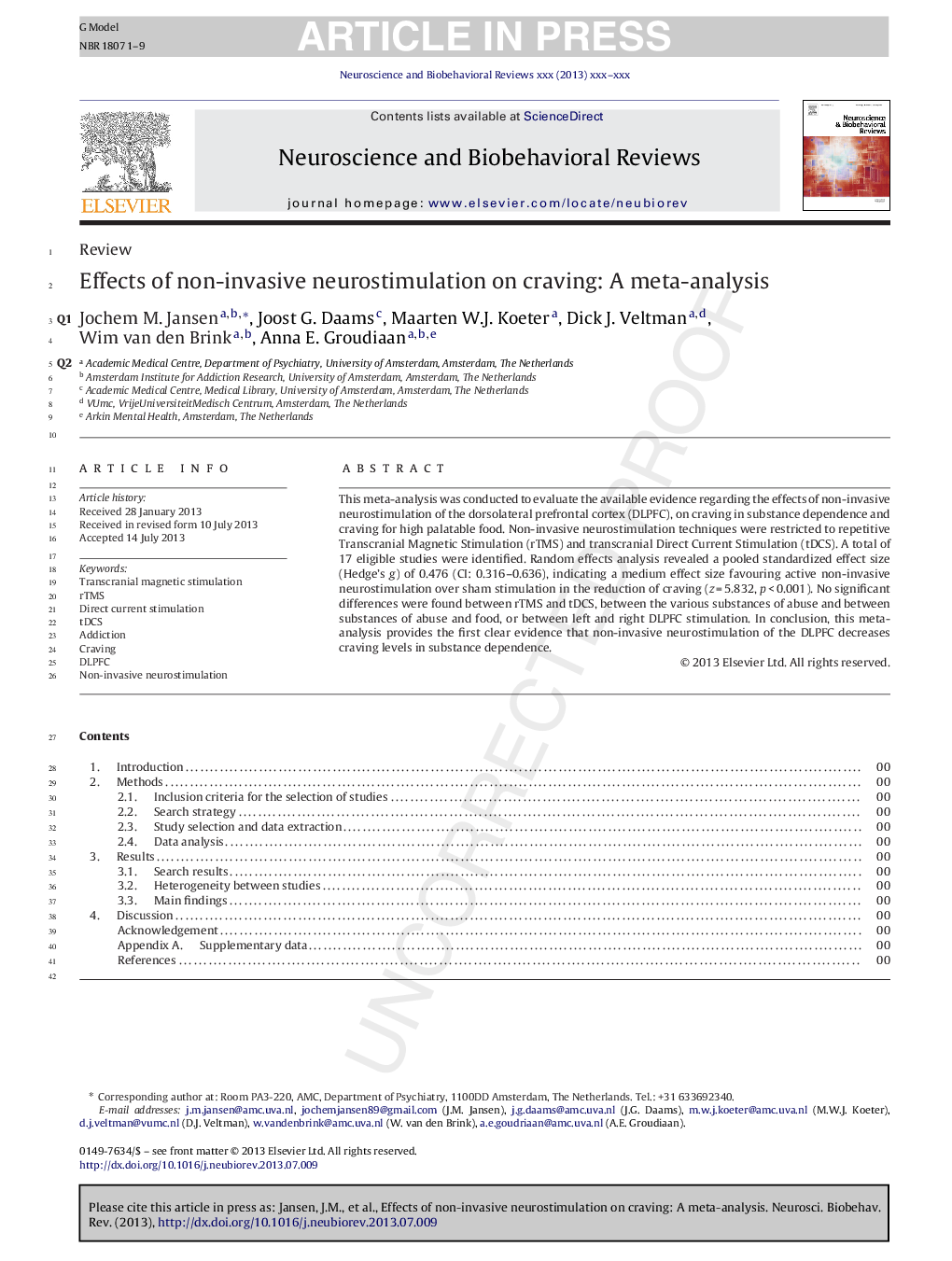| Article ID | Journal | Published Year | Pages | File Type |
|---|---|---|---|---|
| 10461676 | Neuroscience & Biobehavioral Reviews | 2013 | 9 Pages |
Abstract
This meta-analysis was conducted to evaluate the available evidence regarding the effects of non-invasive neurostimulation of the dorsolateral prefrontal cortex (DLPFC), on craving in substance dependence and craving for high palatable food. Non-invasive neurostimulation techniques were restricted to repetitive Transcranial Magnetic Stimulation (rTMS) and transcranial Direct Current Stimulation (tDCS). A total of 17 eligible studies were identified. Random effects analysis revealed a pooled standardized effect size (Hedge's g) of 0.476 (CI: 0.316-0.636), indicating a medium effect size favouring active non-invasive neurostimulation over sham stimulation in the reduction of craving (z = 5.832, p < 0.001). No significant differences were found between rTMS and tDCS, between the various substances of abuse and between substances of abuse and food, or between left and right DLPFC stimulation. In conclusion, this meta-analysis provides the first clear evidence that non-invasive neurostimulation of the DLPFC decreases craving levels in substance dependence.
Related Topics
Life Sciences
Neuroscience
Behavioral Neuroscience
Authors
Jochem M. Jansen, Joost G. Daams, Maarten W.J. Koeter, Dick J. Veltman, Wim van den Brink, Anna E. Goudriaan,
